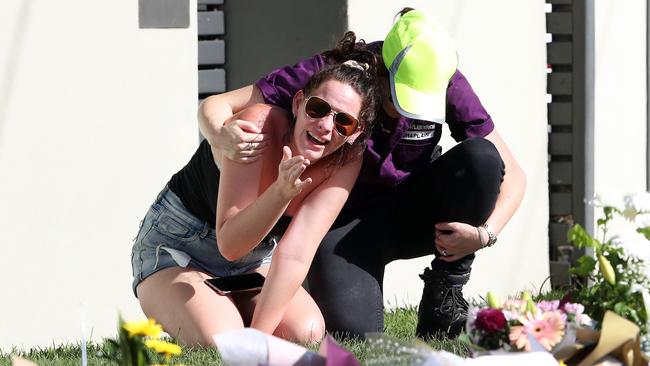Invest in initiatives to address root causes of domestic violence, Law Society SA president Tim White says
By the time the justice system gets involved, it can often be too late to help the victim of a domestic violence relationship. Law Society SA president Tim White says we can’t honestly say we are tackling the issue until we address the root causes.

Opinion
Don't miss out on the headlines from Opinion. Followed categories will be added to My News.
- Hannah Clarke murder: Text messages reveal desperate effort to live
- Are you getting the most from your Advertiser subscription?
THE shocking killing of Hannah Clarke and her children Aaliyah, Laianah and Trey at the hands of her estranged husband is a horrifying example of the domestic violence crisis in Australia.
The most common legal instrument available to provide some protection to domestic violence victims is an intervention order, which is issued by the Magistrates Court.
While IOs can deter abusive behaviour, they frequently fail to provide protection to victims.
An irrational person who is full of resentment is prone to act with total disregard for the IO conditions.
Lawyers have seen IOs help some victims successfully leave toxic relationships, while others continue to be tormented.

Lawyers have also seen IOs influence Family Court decisions to restrict a parent’s access to children unfairly. They are a useful but imperfect tool.
The Family Court system also provides a mechanism through which access to children can be modified or restricted via parenting orders. But obtaining these is often a longer process than getting an IO and unlike an IO will not trigger an immediate police response if there’s a breach.
A separated couple can have orders from both jurisdictions covering access to children, and determining which order takes precedence is not straightforward.
Some children fall through the gaps where orders are inconsistent and the system is under resourced. But Family Court judges do give paramount consideration to the welfare of children and take existing intervention orders into account when making decisions.

The South Australian Government has taken several steps to combat family violence. They’ve increased penalties for breaching IOs, introduced a public disclosure scheme and allowed video from police bodycams to be used as admissible evidence in domestic-violence matters.
Tasmania has recently introduced an offence of emotional abuse or intimidation, while the Women’s Legal Service in Queensland is calling for a new offence of “coercive control”.
MORE NEWS
Holden staff will drive shipbuilding design work
First Aussie to die of coronavirus named
City’s endless summers are now 36 days longer
These types of offences are aimed at protecting victims and preventing more significant physical abuse.
But the justice system cannot adequately address the underlying factors that cause some people, mainly men, to be violent towards partners and children.
It’s only when a line has been crossed and a report made that the law intervenes, but what about the sustained pattern of coercive and controlling behaviour that occurs behind closed doors?
Unless we seriously invest in initiatives that address the causes, we can’t honestly say we are serious about tackling the problem. By the time the justice system gets involved it’s often too late.
TIM WHITE IS LAW SOCIETY OF SA PRESIDENT
Read related topics:Domestic violence


